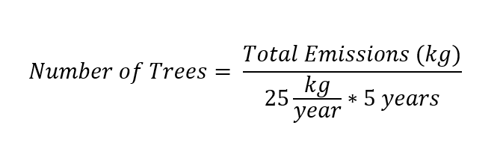Integrating Comprehensive Environmental Analysis in IT Project Delivery
At DXspark, our dedication to sustainability shapes our approach to technology. We’re committed not just to delivering cutting-edge IT solutions but also to ensuring that these solutions are environmentally responsible. This article outlines our methodical approach to achieving carbon neutrality by offsetting carbon emissions through strategic tree planting, enhanced by a thorough understanding of both internal and external environmental factors.
Comprehensive Carbon Emission Analysis:
- Understanding Emissions from Consultant Work:
Initially, we focused on the direct emissions from our consultants’ work, calculated by multiplying the number of hours worked by the average CO2 emissions per hour (101 grams). This calculation considers the energy consumption typical of IT equipment such as laptops and data servers used during project execution.
- Incorporating External Context Factors:
Recognizing that our environmental impact extends beyond direct emissions, we expanded our analysis to include indirect emissions associated with our activities. These include:
- Energy Sourcing: Considering the energy mix of the grid from which our electricity is sourced, notably renewable versus non-renewable sources. For instance, in regions like Portugal, where a significant portion of electricity is generated from renewables, the CO2 emissions per kWh are notably lower.
- Supply Chain Operations: Including emissions from the production and transport of IT hardware and other supplies essential for our operations.
- Employee Commuting and Remote Work: Accounting for emissions from commuting, and enhancing our calculations to reflect remote work setups which often have different energy usage patterns compared to traditional office settings.
- Offsetting Emissions with Tree Planting:
We utilize the calculated total emissions to determine the number of trees required to offset our carbon footprint. We consider the CO2 sequestration capabilities of each tree, factoring in:
- Average CO2 Absorption: A conservative estimate of 25 kilograms per year per tree.
- Tree Lifespan: Initially, a standard 20-year lifespan was assumed. However, to accommodate worst-case scenarios and ensure our sustainability efforts are robust, we adjusted this to a 5-year minimum lifespan in our final formula:


Why It Matters:
Our integrated approach to carbon calculation and offsetting ensures that every project we undertake not only meets but exceeds environmental sustainability standards. By accounting for both direct and indirect emissions, and by adopting a conservative approach to tree lifespan, we ensure that our impact is genuinely net-positive.
Conclusion:
DXspark is leading the way in responsible IT project delivery. By meticulously analyzing and offsetting our carbon emissions, we are not only adhering to our corporate environmental responsibilities but also pioneering practices that set a standard in the industry. Recognizing that sustainability, like the natural ecosystems we support, is a dynamic field, we continuously refine and adapt our models. This iterative approach ensures our strategies remain at the forefront of environmental science and corporate responsibility, adapting to new research, technological advancements, and changes in environmental policy. As we learn and grow, our methods will too, ensuring that our impact on the planet is not only maintained but enhanced.
